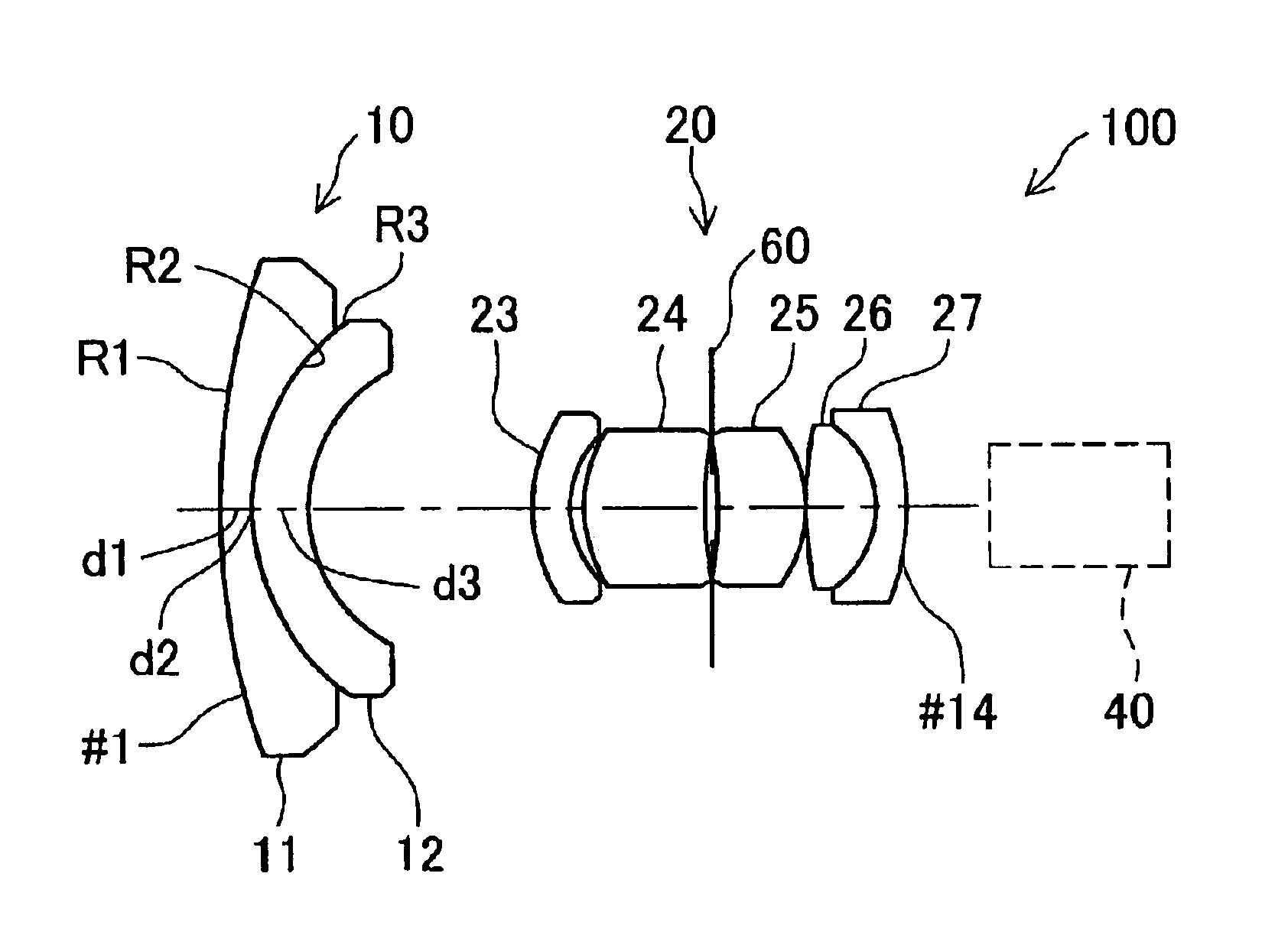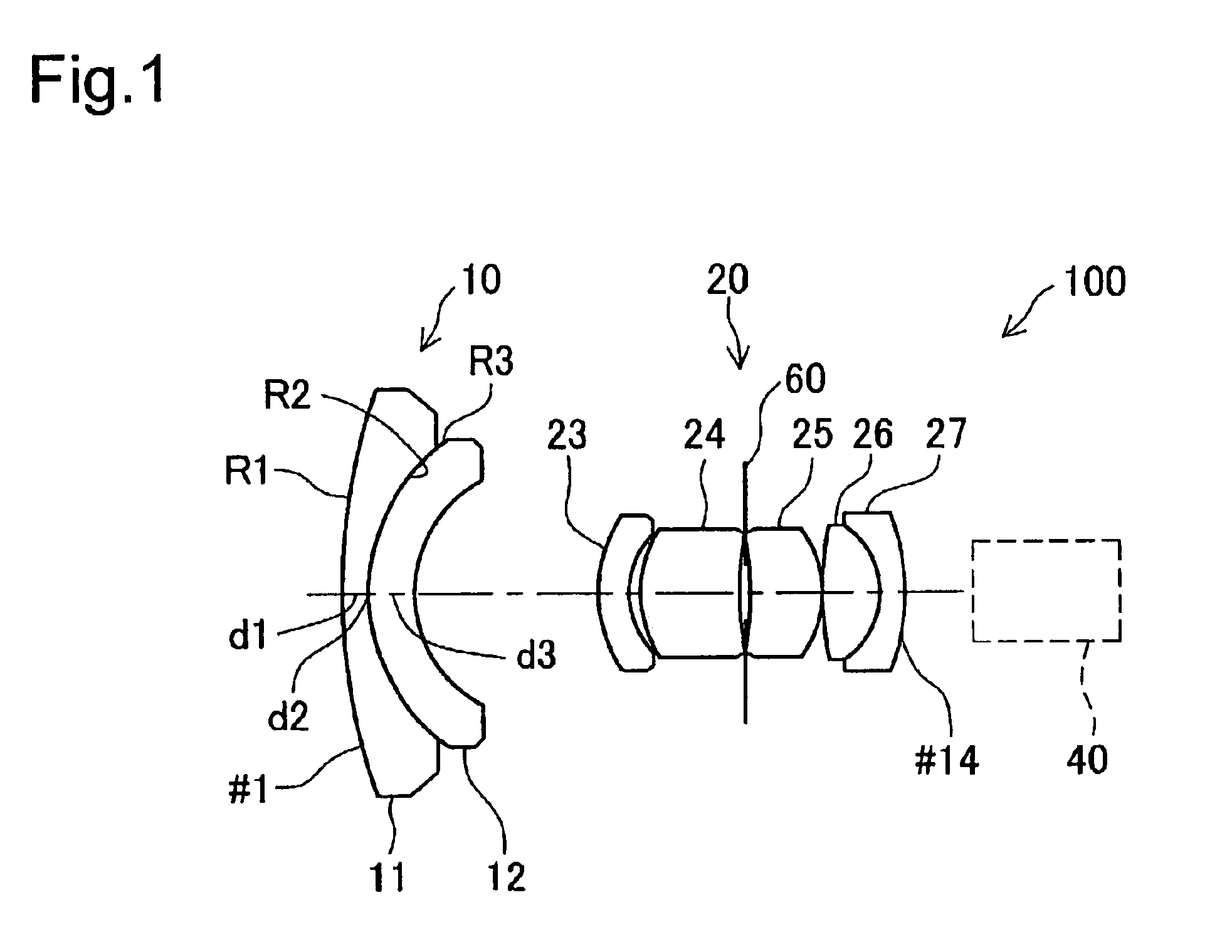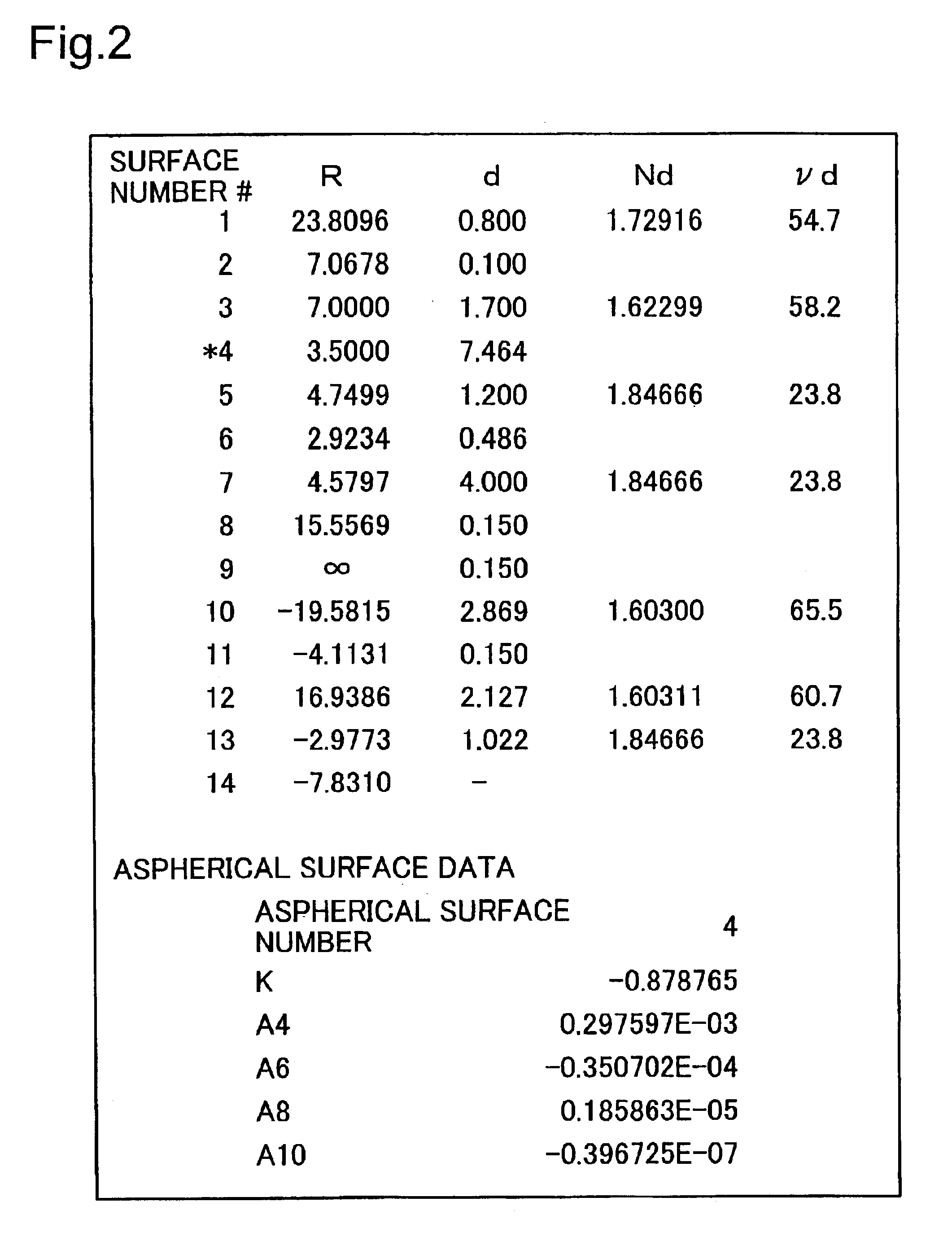Wide-angle lens system
a wide-angle lens and wide-angle technology, applied in the field of wide-angle lens systems, can solve the problems of high negative distortion, significant coma aberration and astigmatism, and high aberration, and achieve the effect of small blurring or distortion, adequate performance, and significant reduction of various types of aberration
- Summary
- Abstract
- Description
- Claims
- Application Information
AI Technical Summary
Benefits of technology
Problems solved by technology
Method used
Image
Examples
first embodiment
FIG. 4 shows the various characteristics of the wide-angle lens system 100 of the first embodiment having the above construction. In FIG. 4, (A) shows the amount of spherical aberration in relation to the F-number, and (B) shows the amount of vertical astigmatism in the image forming surface. The symbols (C), (e) and (g) in FIG. 4(A) indicate the different light wavelengths used in order to seek the respective aberrations (C-line: 656.3 nm, e-line: 546.1 nm, g-line: 435.8 nm). The symbol T in FIG. 4(B) indicates that the characteristic pertains to tangential light rays, while the symbol S indicates that the characteristic pertains to sagittal light rays (and this shall apply to the discussion below as well). FIG. 4(C) shows the amount of vertical distortion in the image forming surface. The same symbols are used in FIG. 14 showing the characteristics of the conventional wide-angle lens system. However, the horizontal axes in FIGS. 4(C) and 14(C) indicate the amount of distortion. In...
second embodiment
the present invention will now be described. As shown in FIG. 5, the wide-angle lens system 200 of the second embodiment comprises a first lens group 110 (lenses 111 and 112) and a second lens group 120 (lenses 123 through 127), and the lenses comprising these lens groups are essentially identical to those described in connection with the first embodiment. The wide-angle lens system 200 of the second embodiment is designed for use in a so-called ½″ CCD camera 140, and the basic constructions of the lens groups are essentially identical to those described in connection with the first embodiment. FIG. 6 shows various parameters pertaining to the lenses of the second embodiment. The symbols used therein are identical to the symbols used in connection with the first embodiment. The focal length (f) for all lens groups of the wide-angle lens system 200 is 4.0 mm, the F-number is 3.0, and the half-field angle is 45.1°. The values for d / d3, R3 / R2, d2 / f and the like are identical to those i...
third embodiment
the present invention will now be described. FIG. 8 shows the lens construction of a wide-angle lens system 300 of the third embodiment, which is designed for use in a so-called ⅓″ CCD camera 240. As shown in the figure, the basic constructions of the lens groups of the wide-angle lens system 300 comprising a first lens group 210 (lenses 211 and 212) and a second lens group 220 (lenses 223 through 227) are identical to the constructions employed in the first and second embodiments except that the second lens 212 is made of synthetic resin, but in this embodiment, a variable aperture mechanism 260 is disposed at the aperture position of the second lens group 220. Whereas the aperture 60 in the first and second embodiments was a fixed aperture with a small thickness, the variable aperture mechanism 260 is thicker due to incorporation of the variable aperture mechanism. As a result, in this embodiment, the distance d8 separating the aperture 60 (i.e., the surface #9) from the lens surf...
PUM
 Login to View More
Login to View More Abstract
Description
Claims
Application Information
 Login to View More
Login to View More - R&D
- Intellectual Property
- Life Sciences
- Materials
- Tech Scout
- Unparalleled Data Quality
- Higher Quality Content
- 60% Fewer Hallucinations
Browse by: Latest US Patents, China's latest patents, Technical Efficacy Thesaurus, Application Domain, Technology Topic, Popular Technical Reports.
© 2025 PatSnap. All rights reserved.Legal|Privacy policy|Modern Slavery Act Transparency Statement|Sitemap|About US| Contact US: help@patsnap.com



